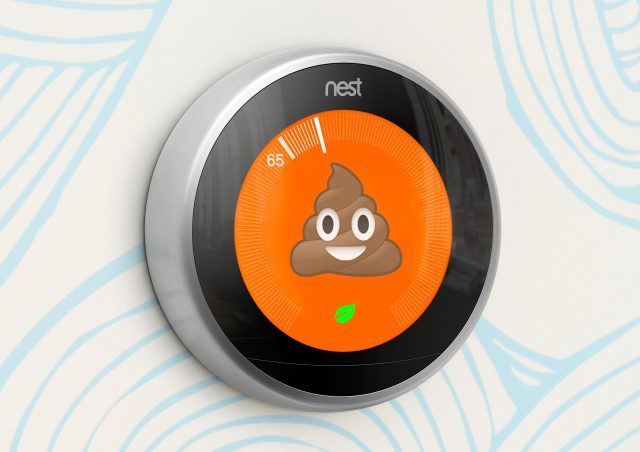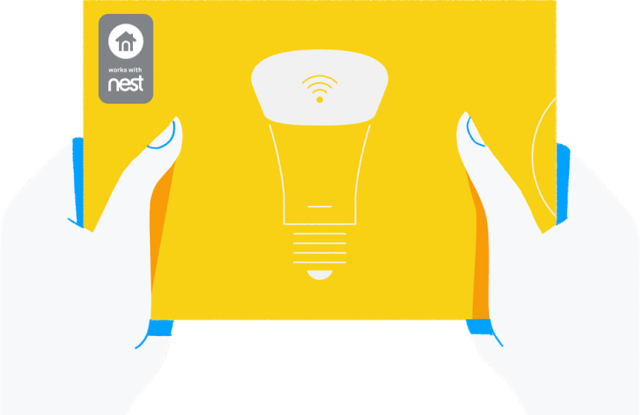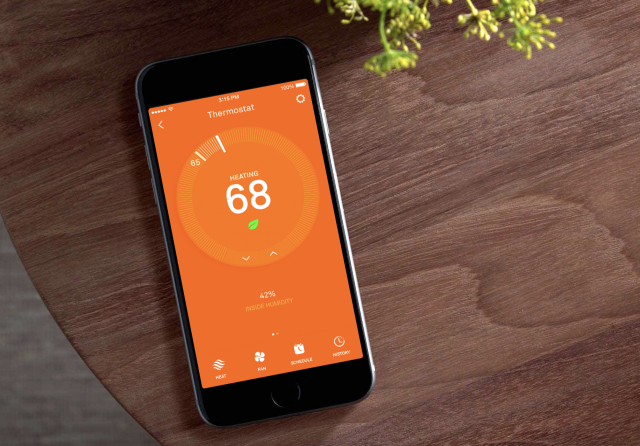

reader comments
369 with 257 posters participating
MOUNTAIN VIEW, Calif.—Don’t be distracted by the shiny new “Nest” smart display that was just announced: Nest died at Google I/O 2019. “Google Nest” is the new reality now, where Nest is no longer a standalone company but instead is a sub-brand (not even a division) of Google. The shutdown of Nest as an independent company was announced in 2018, but the pile of announcements at and around I/O 2019 marks the first time we’re seeing what the future of Nest looks like inside of Google.
Nest laid out its future in an ominously titled “What’s Happening” page on Nest.com and a notice on the Works with Nest page. It sounds like a brutal outcome for users, who are looking at a dead-end ecosystem, potentially broken smart homes, and the shattering of the Google/Nest privacy firewall.
Meet the “Google Nest Learning Thermostat”
First up is Google’s salvaging of the Nest brand as a general purpose smart home sub-brand. Just as Google has the “Pixel” brand for smartphones and laptops, it will now use the “Nest” brand similarly, so get used to saying and reading “Google Nest,” which now means “a Google smart home product.”
The new branding hasn’t hit the Google Store yet, but dig through Google’s help pages and you’ll see that every Nest product has been renamed to “Google Nest.” Now we have the “Google Nest Learning Thermostat,” the “Google Nest Protect,” “Google Nest Secure Alarm System,” “Google Nest Hello” (this one is a doorbell), and the “Google Nest Cam IQ Outdoor.” These are all a bit awkward and wordy, but they have nothing on the “Nest x Yale Lock with Google Nest connect,” which is the actual name of a Nest door lock now.
The takeaway here is that since Nest is not a standalone company anymore, “Nest” doesn’t get to be a standalone product brand anymore. Officially, it will always be “Google Nest.”
So far, the Google Home speakers have not been renamed, but if Google is really serious about this, we might end up with “Google Nest Speakers” or something similar. Google Wi-Fi is also not yet called “Google Nest Wi-Fi.” The Chromecast has not gotten a name change yet, either—though as a streaming stick named after a Web browser, it still has the strangest branding of any Google product.
Nest’s smart home platform is dead

The second big thing to come out of the show is that Google is killing the “Works with Nest” platform. This was a smart home platform that would let the Nest thermostat act as a hub and coordinator for a lot of your other smart home products. A notice on the “Works with Nest” webpage reads, “Works with Nest is winding down.” Google’s smart home strategy will now revolve around only the “Works with Google Assistant” program, and Nest’s ecosystem will shut down in a bit over three months, on August 31, 2019.
Nest, the company, died at Google I/O 2019
View more stories
I’m sure there are “Works with Nest” ecosystem users out there that bought products specifically because they “Worked with Nest.” When the service shuts down in August, it sounds like all of those (probably expensive) third-party smart home products will stop working with any Nest-based automation workflows. This mandatory feature removal situation is pretty much a smart home owner’s worst nightmare.
Nest-branded products will continue to work with each other, but since “Works with Nest” was a program that let other services talk to Nest, a lot of third-party integrations will be going away. The Verge has a good rundown of just how many services are going to break, and it’s a brutal who’s who of smart home products. Amazon Alexa, Philips Hue, IFTTT, Logitech Harmony, Lutron lights, August Home, and Wemo switches will all be affected.
Alexa, it seems, will be getting special treatment and will continue to work. Google has a special page for Alexa, which reads, “We are working with Amazon to migrate the Nest skill on Amazon Alexa to ensure a smooth transition for Nest customers prior to winding down the Works With Nest program in August.” Google and Amazon have had trouble working together in the past, but they seem to have called a truce lately. Other services have not been so lucky, and there are already emails out from IFTTT, Lutron, and others declaring the death of their Nest integration.
“Works with Nest” users will be facing a broken smart home and will have to pick up the scraps of their smart home ecosystem and MacGyver together another solution out of the pieces. The somewhat good news is that most smart home products are compatible with multiple smart home ecosystems, so it should be rare for something to turn into a complete brick. You’ll just have to switch to a new ecosystem, go through a ton of setup, and be ready to deal with all the things that won’t work the same way they worked before. Theoretically ,some of these services could continue to talk to Nest by supporting the Google Assistant system instead.
“Works with Nest” was always a bit of a strange solution for smart home management. It made the thermostat the center of your smart home not because that made any sense from a smart home architecture perspective but because a thermostat was Nest’s most popular product. “Works with Nest” didn’t offer any kind of control interface for this ecosystem of smart devices, either. If you, for example, managed to find a “Works with Nest” smart lighting system, Nest didn’t give you a way to actually control the lights—just location detection through the Nest app.
“Works with Google Assistant” is a voice and touch-centric smart home solution, which makes a lot more sense. The system revolves around Google Home speakers and Google Nest smart displays, which are both excellent control interfaces. You can turn on lights and lock doors with voice or touch commands; you can raise the temperature on a thermostat; and you can run routines that do a lot of these things at once.
Nest accounts and data separation is dead
As part of the Googification of Nest, Nest accounts are being phased out of Google’s smart home strategy. Existing users won’t have their Nest accounts taken away, but the FAQ on Nest.com “strongly recommends” Nest users migrate to a Google account. Nest’s FAQ warns that “As Nest offers new connected home devices and services in the future, many of those will only be available to our users with Google Accounts.” New Nest users will be required to use a Google account.
Migrating to a Google Account means turning all your Nest data over to Google—data that previously had been kept separate. Google says it will use your Nest data in accordance with the Google Privacy Policy. Nest data includes a lot of scary feeds from motion sensors, cameras, and microphones and Google has a whole extra page up on “Google Nest Privacy” in the home, where it outlines three major principles:
We will be transparent about the data we collect and why
We will never sell your personal information to anyone
We will empower you to review, move, or delete your data
There are even special pages outlining principles and data retention for cameras, microphones, home sensors, and Wi-Fi data.
Keeping the Nest data separate from Google was a big concession made when Google bought the company, designed to allay privacy fears. Now that that is going away, I would imagine some Nest users are not happy.
Other Nest things that will probably die in the future
So far it seems like the plan is to remove as many Nest-proprietary things as possible and get Nest people on Google versions of those products and services. Nest’s website promises that “over the coming months, you’ll begin seeing changes across our products, accounts, services, and policies as we bring everything together under Nest.” It would not surprise me to hear that all of these “changes” involve shutting down a Nest product or service in favor of a Google version.
We just had a clash between “Works with Nest” and “Works with Google Assistant,” and the Nest product was shut down, so let’s whip out our crystal ball and extend this to a few other points of crossover.
The Google Home app versus the Nest App

The app situation is a mess right now, with both a “Google Home” app and a “Nest” app. The Nest app is for thermostats, cameras, the security system, smoke detectors, and any other old Nest products, while the smart speakers, Chromecast, and “Google Nest” smart displays use the Google Home app.
The Google Nest hardware rebranding muddies the app situation. People buying a newly branded Google Nest Hub or Google Nest Hub Max might be tempted to install the Nest app, but that would be wrong—these products need to be set up in the Google Home app. The Nest Hub Max smart display has a camera on top, and while this is a “Nest cam” that can record video to Nest’s security camera cloud system, the video feed is also viewable in the Google Home app.
Having two smart home apps for inconsistently named products seems like a really clunky solution, and with the Google Home app already picking up some basic Nest camera compatibility, it would not surprise me to hear that the Nest app will shut down. As a Nest thermostat user, I would love for the Nest app to die because it’s awful. It is unable to get basic functionality right, like reliable background location, which is kind of important for a “smart” thermostat designed to sync the house temperature with your comings and goings. Nest app crashes frequently and even when it does work, it doesn’t follow any of Google’s design language.
The Nest transition FAQ page asks, “What will happen to the Nest app?” and gives a curt response of “At this time, the Nest app will continue to be available.” Google could have answered this question with lots of flowery language about how great the Nest app is and how it empowers users to do more with their smart home ecosystem experience, but this answer instead makes it sound like the Nest app will be jettisoned as soon as Google Home re-implements all of its features.
Nest Aware versus Google One
Another overlap is in the area of cloud storage subscriptions, where Nest has Nest Aware and Google has Google One. Nest Aware gives you online storage of Nest Cam video footage for $5-$30 a month, depending on how far back you want your video history to go. Google One is an upsell for more storage on your Google Account. A basic Google account gets 15GB of storage for Gmail, Drive, documents, and photos, and Google One offers upgrades starting at 100GB for $2 a month and going to stratospherically high prices, like 30 terabytes for $300 a month.
Double dipping on storage subscriptions would be pretty lame, but given that Nest products will start to use a Google account and Google One is for more storage on your Google account, it would make sense for Google One to give you storage for Nest camera footage. Google has other subscription products, but those are always for content, like ad-free YouTube, YouTube TV, or Google Music streaming. In these cases, Google is paying a third-party for content, and that money needs to come from somewhere.
RIP Nest the company, hello Google Nest

While Google wanted to spin the Google Nest Hub Max unveiling at Google I/O as some kind of positive thing, it feels like we are witnessing the end of Nest as it used to be. The new “Google Nest” will be all Google, all the time, and anything that isn’t a built-by-Google device, application, or service now seems like a legacy item. At some point in the future, it seems like only the brand will be left.
I’ve gone to Nest product launches several times, and every time, the company would talk about how Nest was the most recognized brand in smart homes. Clearly Google still values the Nest mark and wants to keep the brand around inside Google, but first it has to go through a clumsy and awkward shutdown process, which will almost certainly be damaging to the brand’s reputation with existing users (and anyone else paying attention).
Google has been on a bit of a product shutdown rampage in 2019, and you can add “Works with Nest” to the list of things Google has murdered lately, along with Google Inbox, Google+ Google Hangouts, Google Music, and Chromecast Audio.


